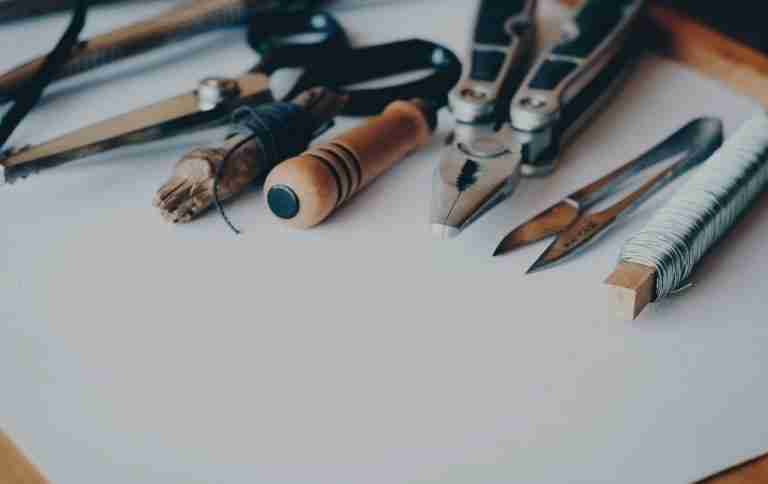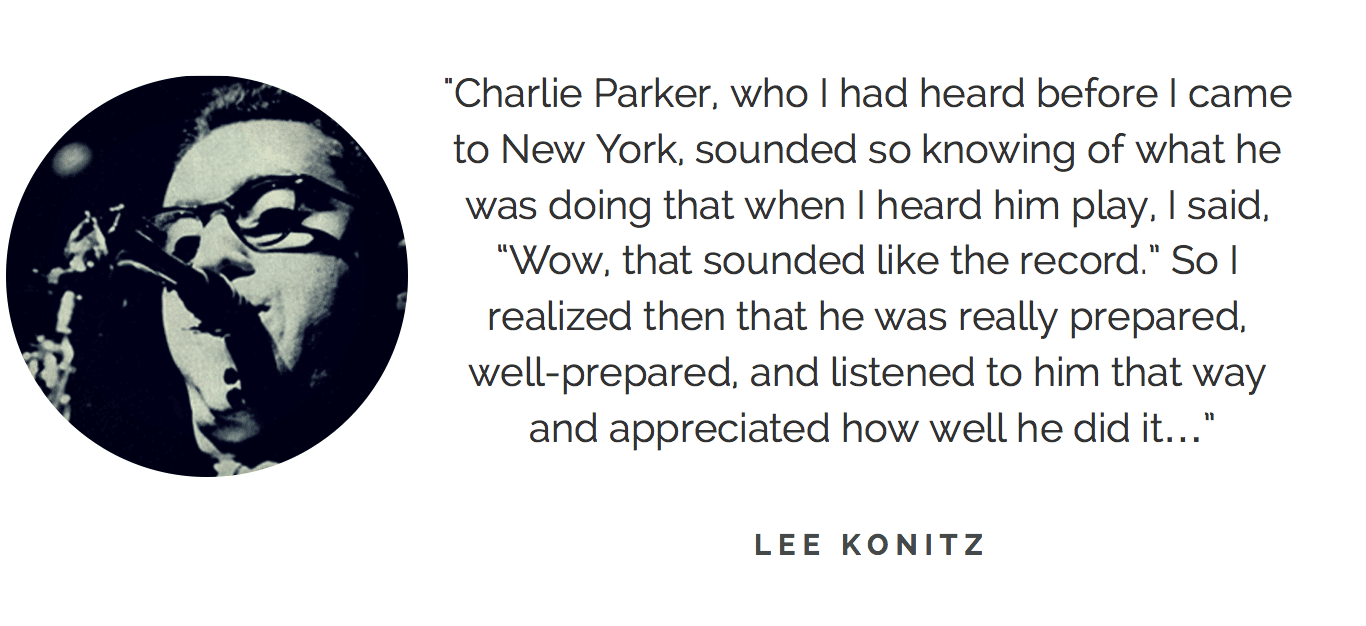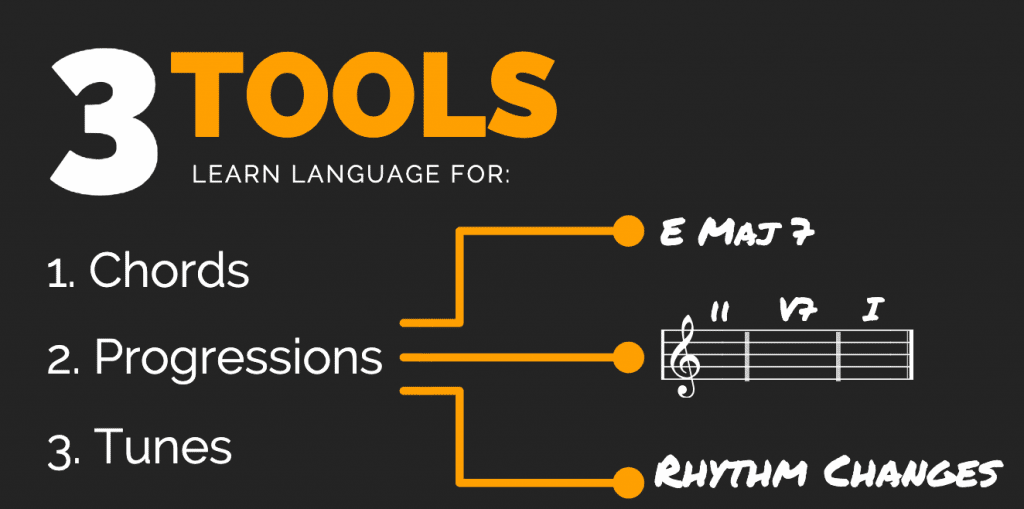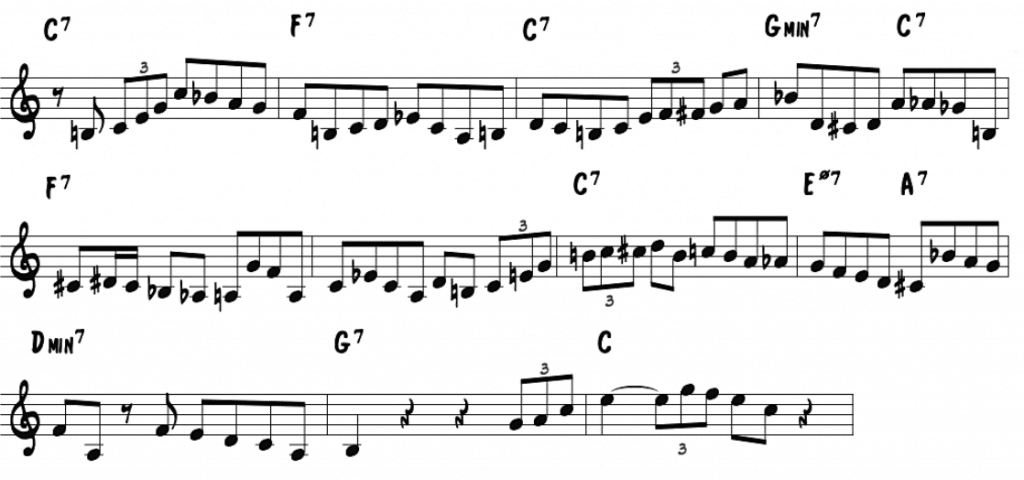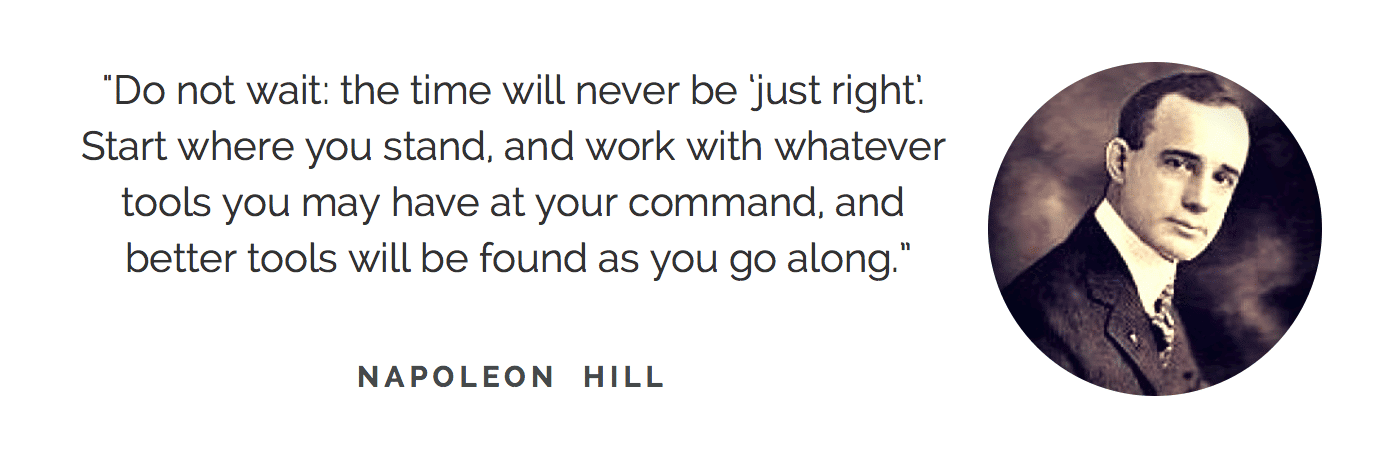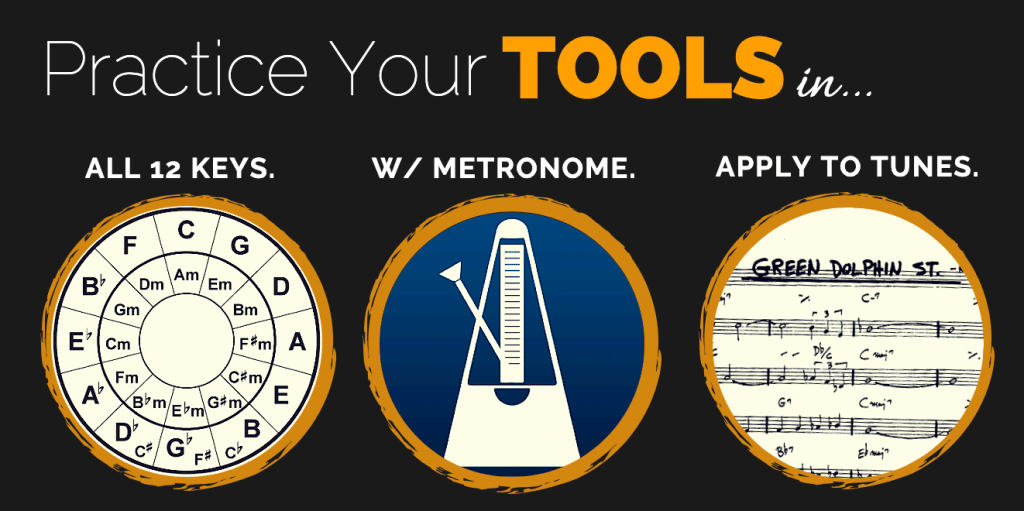Imagine that you’re a construction worker. You’ve just pulled yourself out of bed at 4 a.m. and slipped on your steel-toed boots. As you stretch your tired legs you let out a sigh as another long day looms on the horizon. No worries, nothing you can’t do after a strong cup of coffee. You arrive on site as the sun is rising, just in time to get a head start before the rest of your team shows up. You quickly unpack your gear and reach into your tool box when it suddenly hits you – you’ve forgotten your tools.
“*&$%#!”
The best you can do now is just stand there and mumble some sorry excuse as you silently curse yourself for your stupidity.
Doesn’t sound like too much fun, right?
But then again it’s common sense. I mean who would show up to work without the one thing they need to do their job?
Well, it’s much easier than you think and if you’re a musician, you’re probably guilty of this very mistake. In fact most players out there struggling to improvise are showing up to solo without any tools. What’s worse, they don’t even realize it.
These hopeful soloists have their instruments and they’ve learned their scales. They’ve memorized the melody and the chord progression and they’ve stepped up to the mic. But when it comes to creating musical phrases in real time, they are stuck up there without any tools.
“*&$%#!” is right.
Think of it like this…
The problem starts with the way we look at improvising.
For many, improvisation has this image as a creative pursuit that’s entirely spontaneous and intuitive. “Fly by the seat of your pants, no preparation required, be in the moment!” You just get up there and make it up as you go. However, this isn’t exactly true…
The greatest musicians that we admire were some of the most prepared, most practiced musicians ever to live. You see, no musician can improvise without any preparation and believing this can set you up for failure. Sure your goal is to be creative and intuitive in the moment, but remember, this is the end result of all your practice, not the starting point.
Improvising, like any other profession, requires certain skills to get the job done. These skills are developed in the practice room and eventually become the musical tools that you use in performance. And it’s these very tools that will help you evolve from a player lost in music theory into one that is crafting creative musical phrases by ear on the spot.
So what tools do you have in your bag?
Are you showing up to the construction site with just a screw driver? Are you trying to build a house with a few rusty nails? Or are you going to your rehearsals and concerts with a full toolbox?
The good news is that you don’t need to have the latest and greatest tools to get started, you just need to show up with a basic set that you know how to use inside and out.
The Tools of Your Trade
As a musician your job is to perform at rehearsals, gigs, and jam sessions and in each of these musical situations you need certain musical tools to succeed.
These aren’t physical tools like a hammer they are the skills and techniques that you’ve ingrained in the practice room. Every day that you improvise is a day that you’ll need tools for specific chords, tools for specific chord progressions, and tools for the tunes you perform.
For example, today you might show up for work and see a major chord. Immediately you reach into your bag, what tools do you have in there for a major chord?
Or here’s a chord progression in the key of E. What do you have in your toolbox for that?
After lunch you run into the Blues. What tools do you have to play over the blues?
If you want to be successful you better have an answer. You need to have something in your toolbox for each of these situations, a starting point to spark your improvisation.
The main reason that improvisation is so difficult for a lot of players is that they don’t have an answer to these questions. They are trying to create solos from nothing, improvising without any tools.
Don’t let this be you!
3 Tools for Improvisation
Before we start looking at the tools for improvisation, there are a few prerequisites. Think of this as improvisation 101:
- Technique: You need to be able to produce a good sound on your instrument and be able to navigate the different ranges of your instrument
- Scales: You need to be fluent in all 12 keys with your major and minor scales. Master these scales in all 4 directions.
- Theory: Gain a basic understanding of the fundamentals of music theory including the construction of intervals, scales, chords, and chord progressions.
- Ear Training: You need to be able to hear and identify the sounds that are happening around you musically. Start by mastering all of your intervals.
For many, these are the tools of improvisation. However, the tools you need to create a solo go a step further. Here are the 3 tools for improvisation that will take your solos to the next level:
- I) Learn Language for Chords: In every tune you’ll encounter 3 basic chords: Major, minor, and Dominant (V7). These chords are the building blocks of your solos. You need to learn and transcribe language for each of these sounds.
Example: Here is one tool or piece of language over a Major 7 chord:
- II) Learn Language for Chord progressions: Your next goal is to find tools for common chord progressions (e.g. ii-V-I, turnarounds, I – IV7). Just like you transcribed language for individual chords, you need language over chord progressions.
Example: Here is one tool over a ii-V7-I progression from Dexter Gordon:
- III) Learn Language for Tunes: Finally you need to learn how to navigate the tunes of the standard jazz repertoire. This means the Blues, Rhythm Changes, All the Things You Are, Stella… Transcribe your favorite soloists to gather the tools you need for these tunes.
Example: Here is one chorus of Charlie Parker playing over the Blues:
So where do you find these tools?
You’ve got an empty bag. There’s nothing in your toolbox.
It’s OK. You have to start somewhere – start by finding one tool.
The tool that you’re looking for could be a line over a major chord, it could be a piece of language that works over a blues progression, or it could be a tune that you want to learn by ear.
Whatever the case may be, there are 3 steps to finding any tool:
- Listen – The language that you need to learn is on recordings. If you hear something you like, learn it. Get the sound of that line or chord progression in your ear through repeated listening and by singing it along with the recording.
- Transcribe – After you’ve ingrained it aurally you must learn it on your instrument. Start with small chunks of music and be sure to sing it out loud before you play it.
- Practice – Now that you’ve got it in your ear and on your instrument, it’s all about repetition. Repeat that musical phrase or tune until you’ve mastered every subtlety.
Learn how to use the tool
Once you’ve found a tool, it doesn’t mean that you know how to use it. You can see a jackhammer laying on the ground, but it’s useless until you pick it up and learn how to work with it.
The same is true of your musical tools. It’s the difference between playing a lick and mastering language.
Just finding a tool is not enough, you need to go a step further. Here’s how you do that:
- Learn it in all 12 keys. For a tool to be truly useful you must learn it in every key. Now you’ll be able to use it in any situation.
- Practice w/metronome and slowly increase the speed. To truly control this tool you must be able to play it at any tempo.
- Apply to tunes. Finally, practice inserting this line over the tunes and chord progressions that you are practicing and performing.
Adding to your tool box
Remember that tools aren’t static.
You can use a hammer to build a bookshelf, to secure the beams of a house, or even to hang a picture. Each tool has a number of different jobs and purposes and it’s the same for your musical tools.
A tool that you’ve transcribed over the Blues can also be used in All the Things You Are. A line that you transcribed over a Major 7 chord can be used in a ii-V-I chord progression. Everything is connected.
You can even adapt these tools for your own purpose by adding your own musical alterations.
Start simple and aim to find one tool for each of these musical situations – chords, progressions, and tunes. Eventually your goal will be to collect as many tools as you can. As you practice and perform, these tools will slowly become subconscious, another option in your creative arsenal.
Just like the masters of this music, strive to be a player with the right set of tools to build any musical idea the moment that it pops into your head. Strive to be the player that is concerned with creativity rather than technique.
